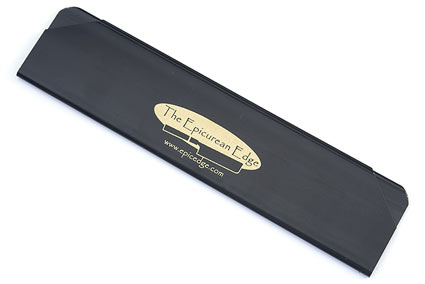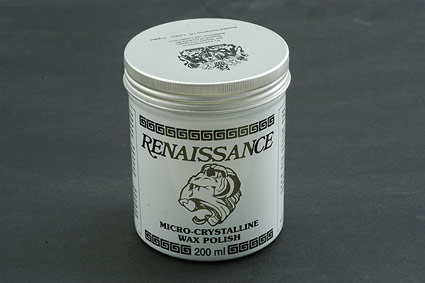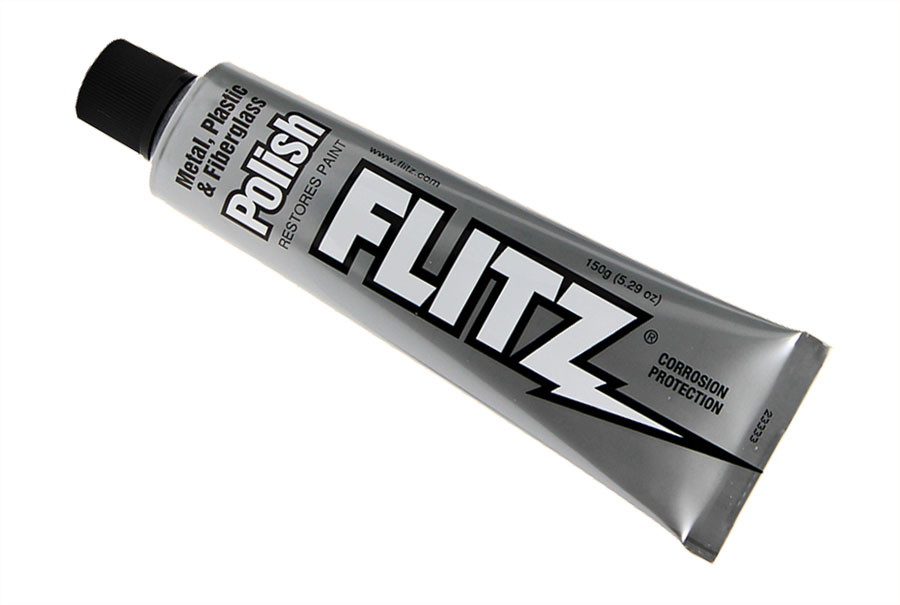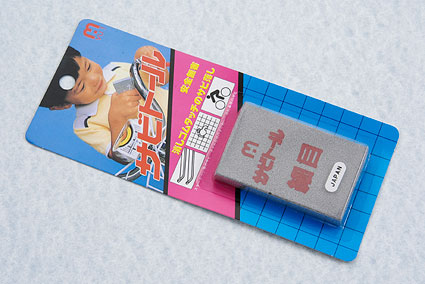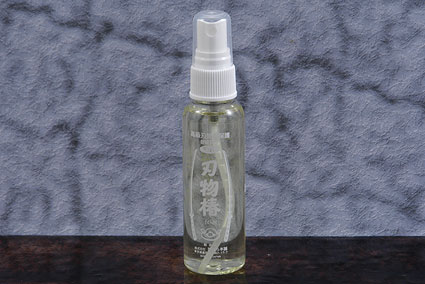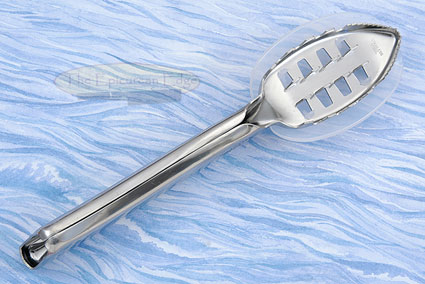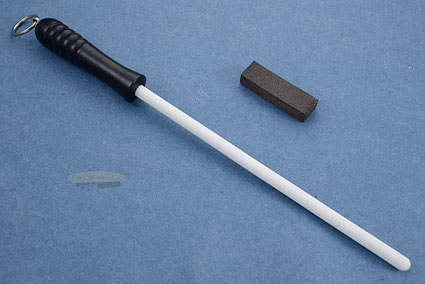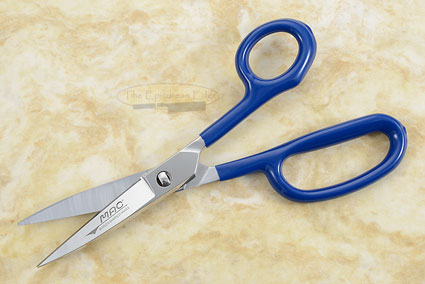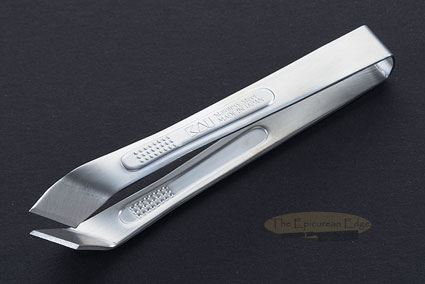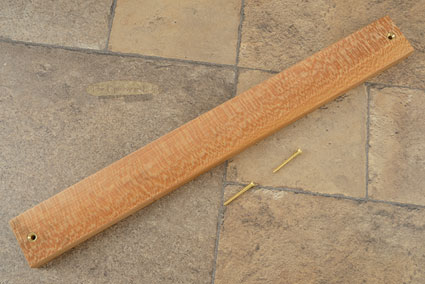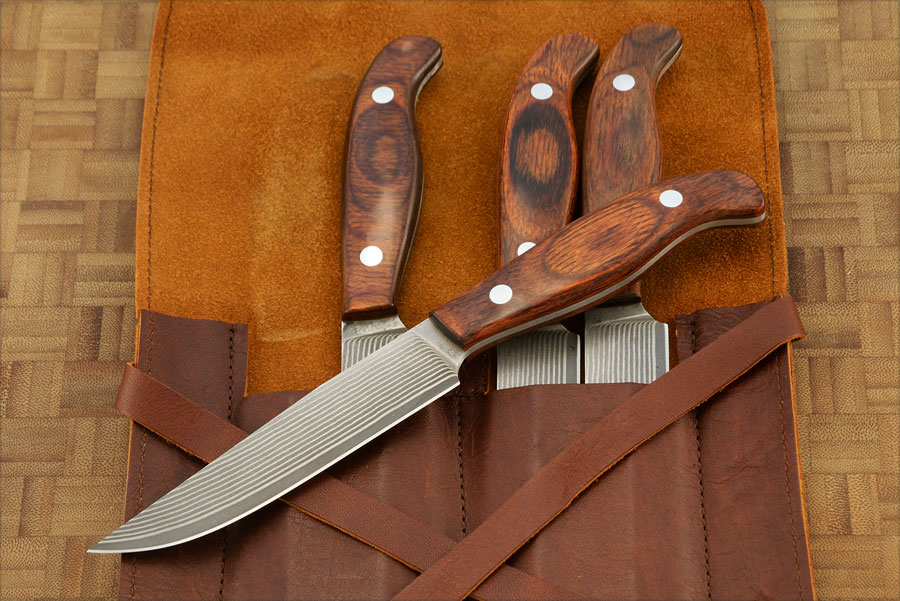Sharpening of Double Bevel Knives
When a blade becomes too dull to cut well immediately after honing, it is time to re-sharpen. The first procedure is to check the edge for nicks. If there are any, rub the edge on a coarse water stone (#220 grit) until the nicks are removed.
The angle used for sharpening your knife will depend on its intended purpose. This is why it is better to sharpen your own knives than to send them out to be sharpened. You know how you treat your knives and what you will be cutting with them. A knife that will see relatively hard use such as cutting through hard or frozen foods or cutting near bone, should be sharpened to a much stouter angle than a sashimi knife. Generally a knife should be sharpened at somewhere between 11¼° and 22½° to the surface of the stone depending on its intended use.
Hold the blade at the angle selected to the surface of the stone, and rub the blade up and down the length of the stone while at the same time sliding it across the stone, alternating sides of the knife. When a ‘burr’ or wire edge is felt, proceed to the next stone. If your angle to the stone is 11¼°, this will create an initial bevel on the edge with an included angle of approximately 22½°. If your angle to the stone is 22½°, this will create an initial bevel on the edge with an included angle of approximately 45°.
Transfer to a series of medium grit stones (#700 to #2000 grit) and complete the process on finishing stones (#4000 to #8000 grit). On each successive stone, sharpen as described above, removing the scratches from the previous stone and refining the wire edge. A nagura stone should be used in conjunction with all finishing stones (#3000 grit and above) to obtain an optimal polishing slurry. On the final stone, after sharpening as described above, increase the angle selected by 4-5 degrees for 8 to 10 strokes on each side of the blade. This results in a ‘micro-bevel’. The resulting knife will have the performance of a thin blade with a slightly stronger edge than would otherwise be possible.
Honing the edge of your knife after use with a ceramic rod will double the longevity of the edge. After use, clean the knife thoroughly, rinse in warm water and dry well. Store the knife in such a way that the edge does not come into contact with other cutlery or utensils. Under no circumstances should any of our knives be sent through the dishwasher.
Supplies:
We have developed several waterstone sets that we have found to be ideal for sharpening. We highly recommend our standard sharpening set, which includes a #220 grit ceramic stone, an #800/#4000 grit combination stone, and an #8000 grit Kitayama stone. A stone holder and nagura stone is also included. If you are undecided as to which stones to select, please feel free to call or e-mail for our recommendation.



